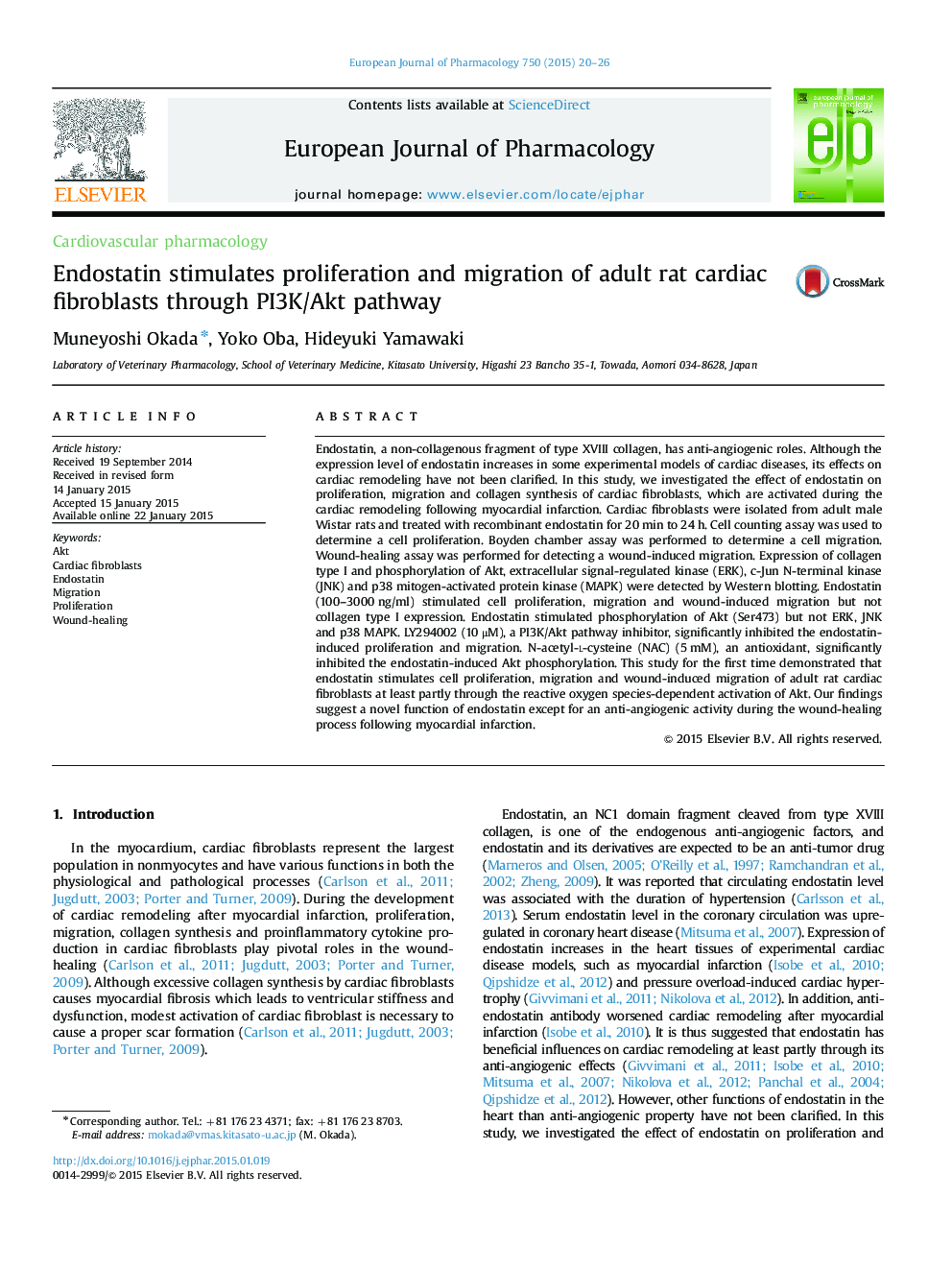| Article ID | Journal | Published Year | Pages | File Type |
|---|---|---|---|---|
| 5827510 | European Journal of Pharmacology | 2015 | 7 Pages |
Endostatin, a non-collagenous fragment of type XVIII collagen, has anti-angiogenic roles. Although the expression level of endostatin increases in some experimental models of cardiac diseases, its effects on cardiac remodeling have not been clarified. In this study, we investigated the effect of endostatin on proliferation, migration and collagen synthesis of cardiac fibroblasts, which are activated during the cardiac remodeling following myocardial infarction. Cardiac fibroblasts were isolated from adult male Wistar rats and treated with recombinant endostatin for 20 min to 24 h. Cell counting assay was used to determine a cell proliferation. Boyden chamber assay was performed to determine a cell migration. Wound-healing assay was performed for detecting a wound-induced migration. Expression of collagen type I and phosphorylation of Akt, extracellular signal-regulated kinase (ERK), c-Jun N-terminal kinase (JNK) and p38 mitogen-activated protein kinase (MAPK) were detected by Western blotting. Endostatin (100-3000 ng/ml) stimulated cell proliferation, migration and wound-induced migration but not collagen type I expression. Endostatin stimulated phosphorylation of Akt (Ser473) but not ERK, JNK and p38 MAPK. LY294002 (10 μM), a PI3K/Akt pathway inhibitor, significantly inhibited the endostatin-induced proliferation and migration. N-acetyl-l-cysteine (NAC) (5 mM), an antioxidant, significantly inhibited the endostatin-induced Akt phosphorylation. This study for the first time demonstrated that endostatin stimulates cell proliferation, migration and wound-induced migration of adult rat cardiac fibroblasts at least partly through the reactive oxygen species-dependent activation of Akt. Our findings suggest a novel function of endostatin except for an anti-angiogenic activity during the wound-healing process following myocardial infarction.
